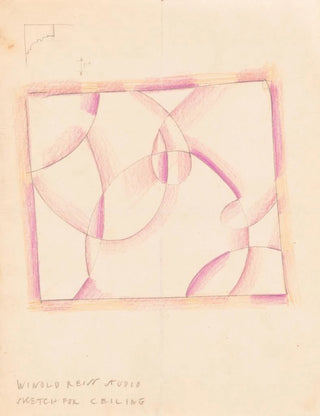Art print | Interior design for screens and ceilings Drawing of plans, elevation, and details - Winold Reiss


View from behind

Frame (optional)
Art print Interior designs for screens and ceilings Floor plans, elevations, and details - Winold Reiss – Captivating introduction
The work "Interior designs for screens and ceilings Floor plans, elevations, and details" by Winold Reiss is much more than a simple technical drawing. It embodies an artistic vision where architecture and art converge, revealing a refined aesthetic that transcends time. In a world where interior design takes a prominent place, this piece stands out for its ability to combine functionality and beauty. Winold Reiss, a German-born artist and designer, masterfully captures the essence of space through precise lines and meticulous details, offering an invitation to explore the subtleties of interior design.
Style and uniqueness of the work
This drawing is distinguished by its harmonious approach to proportions and volumes. Reiss uses flowing lines and geometric shapes to create a visual balance that draws the eye. The elevations and details presented in the work demonstrate flawless technical mastery, while infusing an artistic dimension that goes beyond mere representation. Every element is carefully thought out, every shadow and light is precisely placed to bring a conceived space to life. This blend of rigor and creativity makes this work an emblematic example of the Arts and Crafts movement, which advocates for the integration of art into everyday life. The art print of this piece allows appreciation of the nuances of its unique style and enriches the environment in which it is displayed.
The artist and his influence
Winold Reiss, born in 1886, is an artist whose impact on design and architecture is undeniable. Based in the United States, he successfully integrated European influences while developing a distinctive style that resonates with the ideals of the early 20th century. Reiss collaborated with renowned architects and participated in iconic projects, helping shape the artistic and architectural landscape of his time. His ability to transcend the boundaries between applied arts and visual arts makes him an essential figure. His innovative approach paved the way for many contemporary designers, and his work continues to inspire generations of artists who

Matte finish

View from behind

Frame (optional)
Art print Interior designs for screens and ceilings Floor plans, elevations, and details - Winold Reiss – Captivating introduction
The work "Interior designs for screens and ceilings Floor plans, elevations, and details" by Winold Reiss is much more than a simple technical drawing. It embodies an artistic vision where architecture and art converge, revealing a refined aesthetic that transcends time. In a world where interior design takes a prominent place, this piece stands out for its ability to combine functionality and beauty. Winold Reiss, a German-born artist and designer, masterfully captures the essence of space through precise lines and meticulous details, offering an invitation to explore the subtleties of interior design.
Style and uniqueness of the work
This drawing is distinguished by its harmonious approach to proportions and volumes. Reiss uses flowing lines and geometric shapes to create a visual balance that draws the eye. The elevations and details presented in the work demonstrate flawless technical mastery, while infusing an artistic dimension that goes beyond mere representation. Every element is carefully thought out, every shadow and light is precisely placed to bring a conceived space to life. This blend of rigor and creativity makes this work an emblematic example of the Arts and Crafts movement, which advocates for the integration of art into everyday life. The art print of this piece allows appreciation of the nuances of its unique style and enriches the environment in which it is displayed.
The artist and his influence
Winold Reiss, born in 1886, is an artist whose impact on design and architecture is undeniable. Based in the United States, he successfully integrated European influences while developing a distinctive style that resonates with the ideals of the early 20th century. Reiss collaborated with renowned architects and participated in iconic projects, helping shape the artistic and architectural landscape of his time. His ability to transcend the boundaries between applied arts and visual arts makes him an essential figure. His innovative approach paved the way for many contemporary designers, and his work continues to inspire generations of artists who






